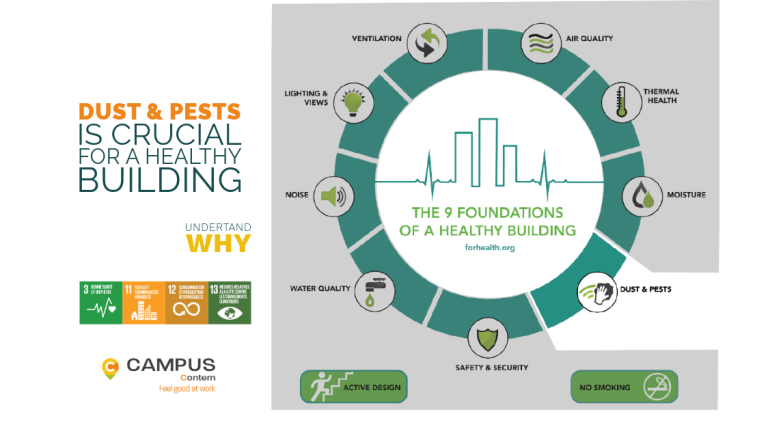Adults ingest up to 100 mg of house dust per day, and children up to 200 mg!
This single statistic highlights the significant daily exposure people have to indoor dust, especially children, who are more vulnerable due to their behaviors and time spent close to the ground.
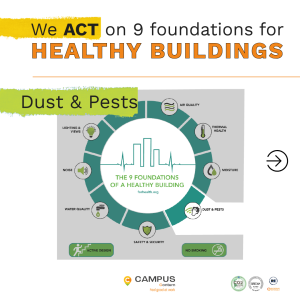
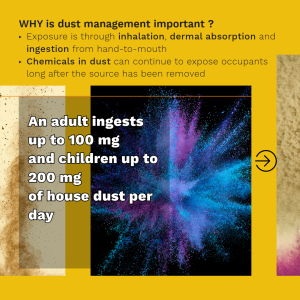
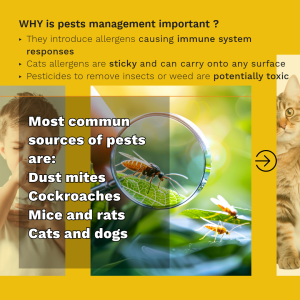
How does dust affect the body?
Dust in indoor environments poses significant risks to human health due to the contaminants it carries and how they enter the body.
Dust can be inhaled when it resuspends in the air, absorbed through the skin, or ingested, especially in children who frequently engage in hand-to-mouth behavior.
On average, adults ingest up to 100 mg of dust per day, while children ingest up to 200 mg.
This dust acts as a reservoir for harmful substances like outdoor pollutants, bacteria, mold spores, pet dander, and toxic chemicals such as lead and Persistent Organic Pollutants (POPs). These chemicals can remain in dust for years, continuously exposing occupants to potential health risks.
How do pesticides affect the body ?
The presence of pests further aggravates indoor air quality by introducing allergens from dust mites, cockroaches, rodents, and pets.
Dust mites, commonly found in bedding and upholstery, release allergens that can trigger asthma and allergic reactions, especially in children. Cockroach allergens have been linked to asthma hospitalizations, while mouse and rat urine allergens can be resuspended in the air and inhaled.
Pet allergens, particularly from cats, are sticky and can be found even in environments without pets, such as schools or offices.
What can we do to prevent it ?
Prevention starts with proper indoor hygiene and pest control measures.
Regular cleaning to reduce dust buildup, using air purifiers, and ensuring good ventilation can minimize exposure.
Additionally, integrated pest management (IPM) is recommended over chemical pesticides to control pests, as pesticide exposure itself can cause long-term health issues such as cancer, respiratory problems, and reproductive health effects.
Reducing dust and pest allergens in indoor environments is critical for safeguarding human health.
@CAMPUS CONTERN it means :
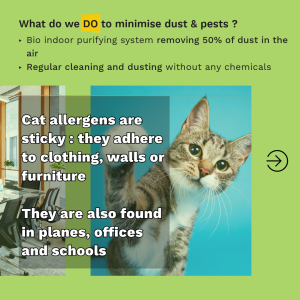
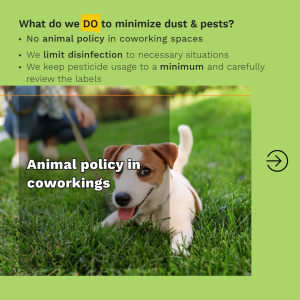
- We use a biotech air purifying system that reduces dust by 50% in the air, thus reducing the risk of air transmission and persistence
- We have a regular cleaning program with chemical-free products and vacuuming
- We have a no pet policy in coworking spaces
- We limit the use of disinfectant and pesticides to a minimum and we look carefully at the labels to minimize the impact
Our Goal :
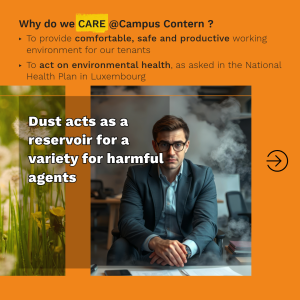
- To make sure that our tenants have a safe and healthy work environment. They spend a lot of time in our buildings, it is our responsibility to do our best to reduce the causes of fatigue, absenteeism and to foster concentration and performance
- To protect our tenants from chronicle diseases and play our part in the National Health Plan
Source : “The 9 foundations of a healthy building” Harvard School of Public Health – forhealth.org
